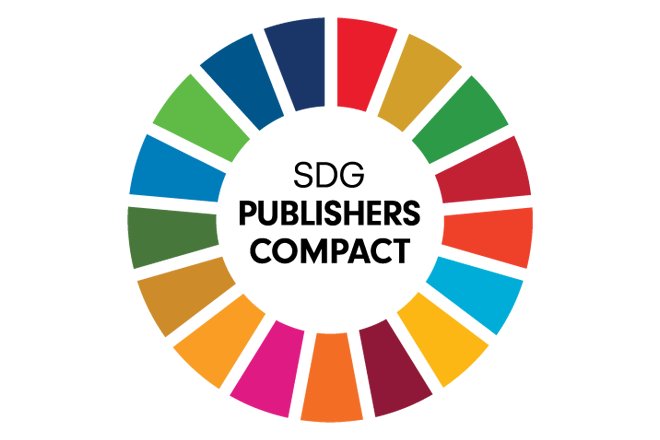Moving 'beyond the journal' and recognising that 'research is not always article shaped' is key to making sure research reaches a wider audience. Why? Because ultimately it could lead to your research having a greater impact on society.
So, we're working with our communities and are committed to discovering and experimenting with new forms of digital content to help researchers better tell the story of their work.
Our aim is to contribute to the development of new best practices to help members of the community learn from each other and create positive change.

New forms of content
Below are just some of the ways we are remixing traditional outputs.

Podcasts
Podcasts are not new but are increasingly becoming an effective way to distil research findings into a digestible format that is accessible to all.
The Emerald Podcast series speaks to experts from around the globe, bringing research to life on important or topical themes. With a library of over 70 podcasts, you can listen in at any time, via your chosen platform.

Blogs
Blogs are a popular way of disseminating research. They are sharable on social media so can reach a wider audience. Plus, they are a lot more concise and briefer than journal articles so a good way to translate essential information. The Emerald blog series helps to bridge the gap between academic research and its application in the real world.

Policy briefs
A policy brief aims to directly influence government policy by reviewing current research in important areas. They are a trusted, impartial source of information, act as evidence for policy developments and often advocate a particular course of action.

Impact articles
This new kind of article aims to celebrate and make explicit the impact of research.
First introduced in the European Journal of Marketing (EJM), impact articles explicitly focus on understanding, designing, demonstrating, and tracking impact, and above all, highlight what has changed as a result of the research.

Blogs and success stories
If you are looking to reach policy makers, but not sure where to start, take a look at the KU Center for Public Partnerships and Research blog series. Here, Jessica Sprague-Jones and Jacqueline Counts talk through the steps researchers must take if they wish to influence policy.
Examples of research gaining policy attention
The following policy briefs have been picked up by policymakers and cited in policy documents.

Policy learning from COVID-19 in Europe
Drawing on a wide range of multi-disciplinary published materials and official statistics, research articles, reports, briefings and academic debates, as well as media headlines and commentary, this briefing assesses policy learning during the first wave of the pandemic in Europe.
Cited in: European Institute for Gender Equality document

The effectiveness of hazard risk communication- expert and community perspective on Orewa in Auckland, New Zealand
Understanding natural hazard risk at a community level is essential for successful natural hazard risk reduction. Orewa was chosen for this research in order to provide a complete picture of how New Zealand’s civil defence and emergency management (CDEM) and early warning mechanisms fit into a multi-hazard area.
Cited in: European Commission document on disaster risk management

Case studies
Encouraging co-creation
Podcast: Supply chain pracademics: encouraging co-creation between academics and practitioners in the supply chain field
Supply chain management has much to gain from collaborative relationships between academics and practitioners, from knowledge exchange and enhanced training to better problem-solving, increased innovation and more relevant solutions. Despite the benefits of co-creation, there can be obstacles to overcome, particularly around meeting the expectations of all parties.
In this podcast, we explore the opportunities and challenges around co-creation between academics and practitioners in the supply chain field, and how we can foster these relationships. Our guests Professor David Loseby and Professor Chee Yew Wong highlight the supply chain issues that would benefit most from co-creation and offer strategies that can help drive collaborative success.

Innovators and transformers
The International Journal of Physical Distribution & Logistics Management (IJPDLM) launched a section dedicated to research articles that detail emerging problems, challenges, lessons learnt, and the future potential of major innovations and transformations in the logistics and supply chain management field. It encourages co-creating articles with practitioners who drive innovations and transformative opportunities for future supply chains.
Find out more about how the journal is providing a publishing space to help co-create and innovate the supply chain discipline.

Voices from the Field
Voices from the field (VFTF) provides a novel forum to hear from the readership of the Journal of Professional Capital and Community (JPCC).
Practitioners contributing their insight, experiences, and feedback in relation to scholarship published in JPCC can do so in written, graphic/visual, audio, and/or video format(s) – offering a broad range of research outputs, outside the traditional journal article.

Implications for practitioners
This section within The Learning Organization (TLO) journal aims to make ideas presented in TLO accessible to a wider audience.
The section highlights case studies or examples believed to promote and drive real change in developing learning organisations and strengthening learning capacity.

Global perspectives and future trends
The Hidden REF – celebrating all research outputs

The hidden REF is a campaign to recognise all research outputs and every role that makes research possible. It began with a competition held in 2021 which showcased the diversity of research outputs in UK research. Since then, the campaign has attracted a lot of attention but most importantly, has also impacted change.
An output from the campaign is a published white paper. It outlines the experiences and processes underpinning the first Hidden REF exercise in 2021, plus the discussions held at the inaugural Festival of Hidden REF in Bristol, UK, on 21 September 2023.

Closing the impact gap report
Our commitment to help researchers drive change in society, along with supporting quality education for all, prompted us to seek answers to questions on how research is currently used and shared both within and outside of academia.
We also looked at how research outputs might be developed in the future to advance accessibility, learning, and real-world impact.
- There is a general desire for innovation within teaching and research outputs. Current research outputs, such as the journal article, are too long and difficult for students to use effectively for learning, and publishing and funding pressures are thought to be stalling innovation.
- Policy makers, funders, universities, academics, and publishers share responsibility for making research outputs fit for the future and it’s time for all of us involved in the higher education landscape to consider what we can do to create change.
- We all need to work together to ensure the structures and incentives that currently dictate the research ecosystem do not hinder future academics from doing things differently in the future.

The ideas-informed society
This co-produced project aims to better understand how people engage with evidence in order to make decisions in their daily lives, be those big or small decisions.
The project is managed by Professor Chris Brown, University of Warwick, UK, Dr Jana Groß Ophoff, University College of Teacher Education, Austria, Ruth Luzmore, University of Warwick, UK and Sharon Parkinson, Emerald Publishing, UK.

Useful resources and tools

SDG Publishers Compact top tips
View top action tips, created by the SDG Publishers Compact Fellows to identify key practical actions that different groups within the scholarly community can take to embed SDGs into practice.
This includes tips on how to communicate with professionals and practitioners.

Are you in?
Are you in for finding new formats and channels to disseminate research to reach a wider audience?
This is just one of six commitments in our Real Impact Manifesto where we think we can all work together for change – will you join us?
